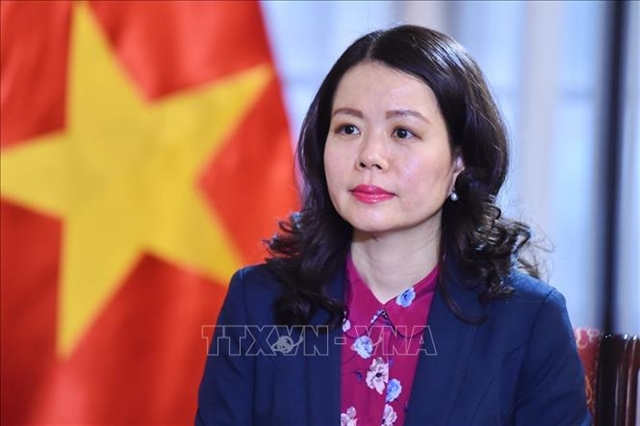 Economy
Economy


|
| A shrimp breeding pond in the Mekong province of Sóc Trăng.— VNS File Photo |
HCM CITY — Local shrimp-breeding enterprises have mobilised investment from various sources to expand production in an aim to attract partners from shrimp supply chains from around the world.
After four decades of development, Việt Nam’s shrimp breeding industry has been recognised as the third top exporter in the world market. Shrimp is one of the country’s major farm exports.
Trương Đình Hoè, General Secretary of Việt Nam Association of Seafood Exporters and Producers (VASEP), said that Việt Nam’s shrimp exports surpassed Thailand in 2013, attaining an export turnover of US$3.1 billion, compared with Thailand’s US$2.3 billion.
In 2017, Việt Nam had shrimp export turnover of US$3.8 billion, double Thailand’s shrimp exports of US$1.9 billion, said Hoè.
To reach the target of shrimp export value of US$10 billion for 2025 (as instructed by the Prime Minister), shrimp breeding firms have mobilized capital to expand areas under shrimp breeding and ensure shrimp quality and safety, allowing for traceability of produce to meet consumption demand.
Sao Ta Foods Joint Stock Company has announced that it would offer more than 8 million shares priced at VNĐ25,000 each. With the offer, Sao Ta is expected to attain stakes of about VNĐ200 billion (US$8.7 million).
A spokesman from Sao Ta Foods said that capital mobilisation is expected to help the joint-stock firm become less reliant on bank loans, while ensuring sufficient capital for the firm’s production and business activities.
He said all the sales of shares from Sao Ta Foods will be spent on purchasing materials and the expansion of shrimp breeding ponds.
By the end of the third quarter, Sao Ta’s 200 ha of shrimp breeding ponds had supplied 10 per cent of shrimp used as materials for the company’s processing lines. Sao Ta had to purchase the remaining 90 per cent from shrimp breeders in the market.
To reduce the volume of shrimp used for its production line purchased from the market, the company has unveiled plans to invest VNĐ100 billion to expand shrimp breeding ponds from the existing 200ha to 400ha in 2020 and to 800 ha in 2025, raising the ratio of the volume of shrimp supplied from the company’s breeding pond networks to 30 per cent.
Similarly, Minh Phú Seafood Corporation has sold 35.1 per cent of its shares to Mitsui & Co Ltd. for 17 billion yen (about US$155 million), making Mitsui & Co the biggest shareholder of Minh Phú Seafood.
Lê Văn Quang, chairman of Minh Phú Seafood Corp.’s management board, said the company would further invest in production facilities in the Mekong province of Cà Mau.
Quang said the company would also apply more advanced technologies, including artificial intelligence (AI) and the internet of things (IoT), in aquaculture and seafood production and processing in the near future, aiming to cut 50 per cent to 70 per cent of the company’s labour force, and at the same time increase profits.
According to a spokesman for Sao Ta Foods, to reach a partnership with global shrimp supply chains, local shrimp suppliers must meet high standards.
He said that most global shrimp supply chains require not only production and manufacturing traceability but also ASC standards for aquaculture, the highest standards for aquaculture.
To attain ASC standards for aquaculture, aqua-breeding enterprises must have strong financial capacity for investment in big breeding facilities that help to reduce breeding costs, he added. — VNS




